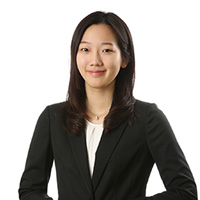[Herald Design Forum] An architect who understands humans
Yoo Hyun-joon to discuss school architecture at Herald Design Forum
By Im Eun-byelPublished : Sept. 11, 2018 - 16:17
There was a time when Korea was practically obsessed with architecture. In 2012, the film “Architecture 101” made singer-actress Suzy a household name.
Then, last year, there was a resurgence of interest in architecture when Yoo Hyun-joon, a professor of architecture at Hongik University and the head architect at Hyunjoon Yoo Architects, appeared on tvN’s “Trivia.”
Yoo immediately rose to stardom. His way of connecting human desires to architecture was fascinating -- not to mention his soft, gentle manner of speaking.
Then, last year, there was a resurgence of interest in architecture when Yoo Hyun-joon, a professor of architecture at Hongik University and the head architect at Hyunjoon Yoo Architects, appeared on tvN’s “Trivia.”
Yoo immediately rose to stardom. His way of connecting human desires to architecture was fascinating -- not to mention his soft, gentle manner of speaking.

As the famed professor-architect is to take the podium at Herald Design Forum 2018 on Saturday, The Korea Herald met with him at his architectural firm in southern Seoul.
“(At the forum) I will be discussing school architecture. Education is (crucial to the) future for the whole society,” said Yoo, the father of two boys who are often scolded by their mother for not studying enough.
“But do you know the construction costs for every 3.3 square meters of an elementary school are set at 5.5 million won ($4,990)? And it is 8.8 million won for a prison,” Yoo said.
“Korea’s school architecture scene is a mess,” he said. “The bidding process is all about personal connections. No real architecture can be created in that environment.”
The professor took on school architecture in the first chapter of his latest book, “Where to Live,” published in May. It is his fifth published book.
“For TV shows and interviews, there’s a time limit. But for books, it is as if I am talking by myself for a whole year. I can fully deliver what I think without anyone interrupting me,” he said. “Many clients contact me after reading my books, fully understanding my thoughts on architecture.”
In his latest two books, “What Do Cities Live On” (2015) and “Where to Live” (2018), Yoo interprets architecture through the eyes of the humanities -- for instance, asking why we like cafes and small streets. He also asks why desks are placed in a certain way in most offices. A forthcoming book, now in the planning stages, will look at the history of humankind through architecture.
“I have always wondered about human desires. What makes a person think in a certain way? In the end, it is about finding the universality of people. People, across cultures and nations, share the same basic natures and instincts,” Yoo said.
For instance, in a cafe, everyone wants to sit at a corner table, to see what other people are doing and to avoid turning their backs on others. That is human nature, according to Yoo.
Architecture is about understanding human nature and satisfying people, Yoo said, emphasizing the importance of understanding how humans interpret space.
The architect’s mission is to make people happy. He believes that people can maintain good relationships through architecture, as architects link different spaces occupied by different people.

That is why Yoo is so interested in the idea of “mid-zones.” Mid-zones are where people harmonize with each other, he said. He is critical of Korea’s contemporary architecture -- especially when it comes to apartments -- saying it has neglected the importance of mid-zones, creating cutoffs and misunderstandings.
“To evaluate an (architectural structure) just by its lines and outer shape is unprofessional. It is very superficial,” he said. “One should look at the faces of the people inside. If it is a building without people, one should imagine how people would feel inside the structure.”
By Im Eun-byel (silverstar@heraldcorp.com)


















